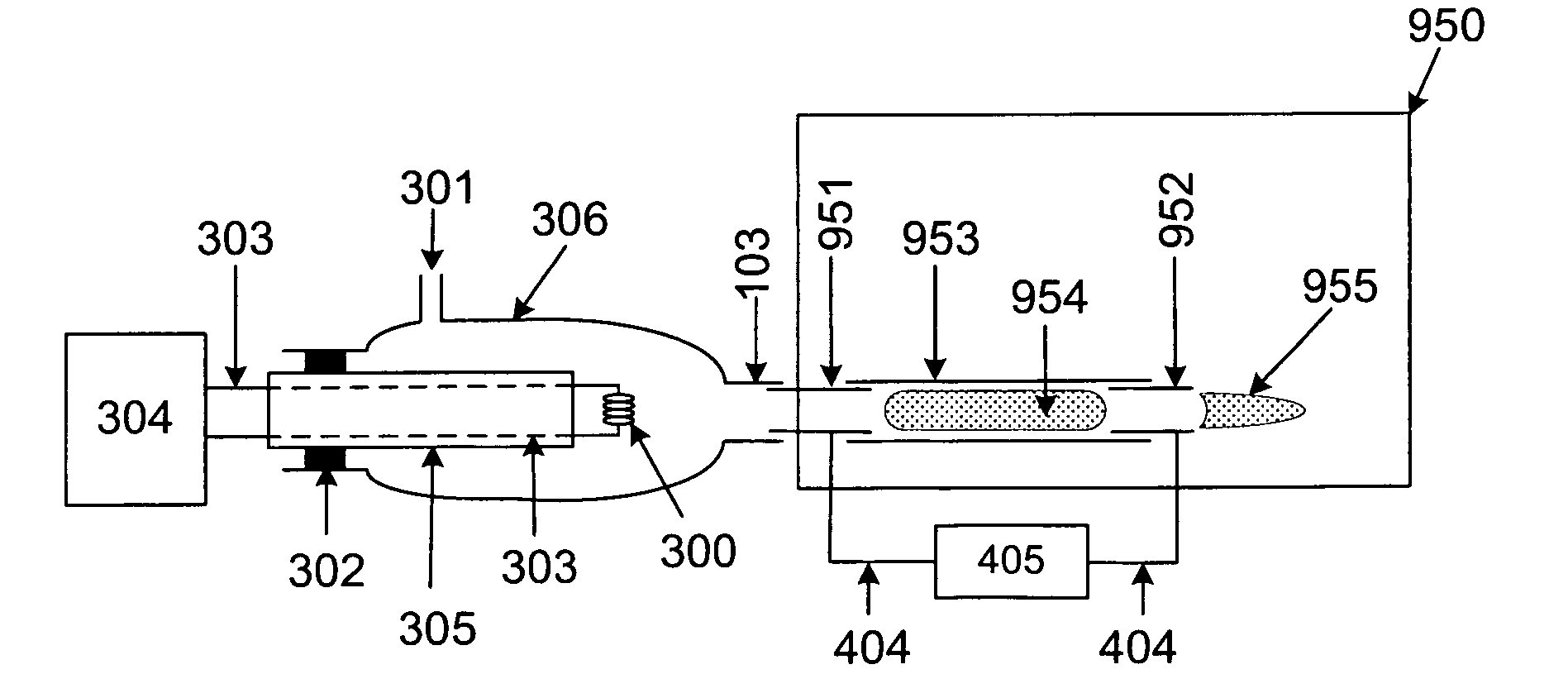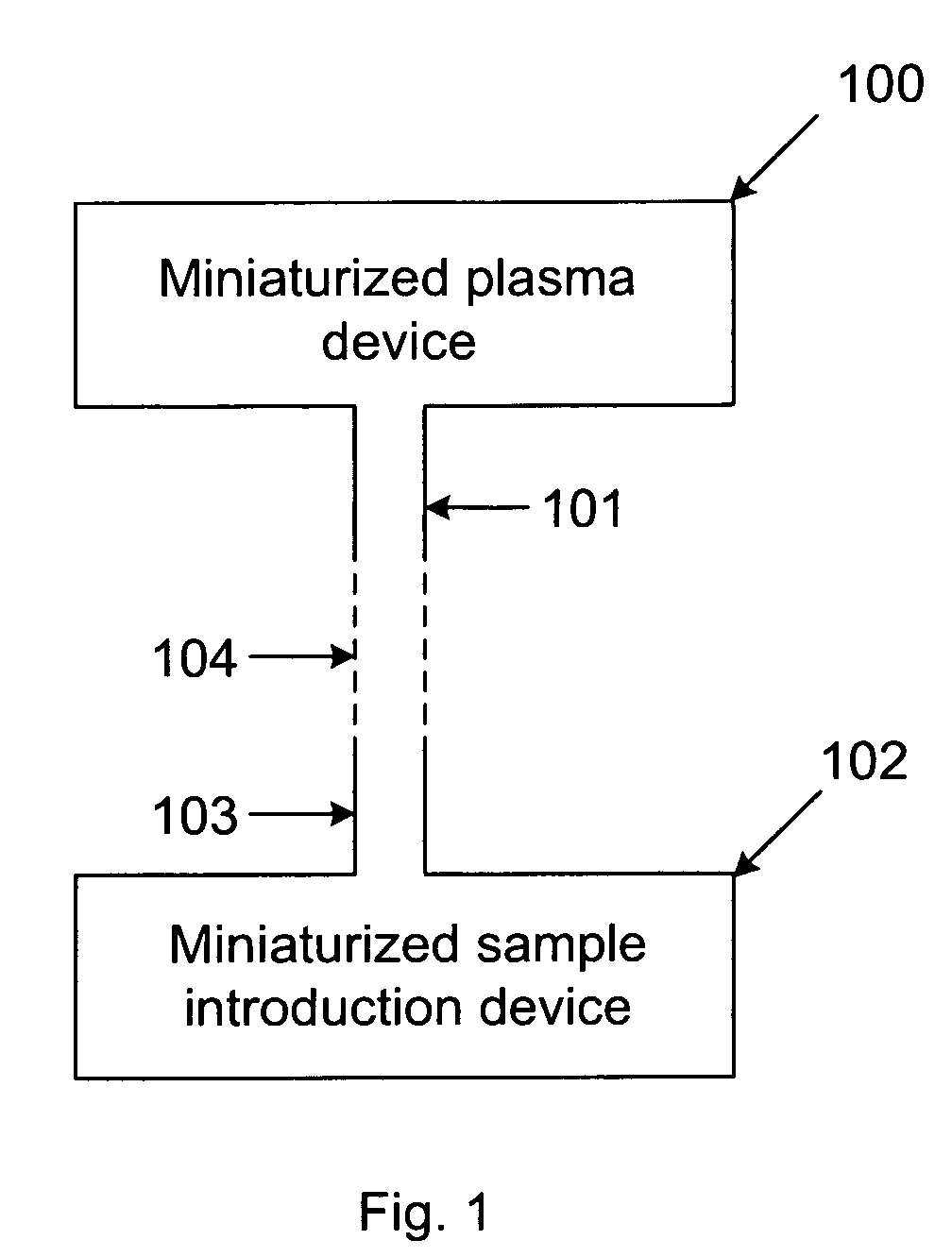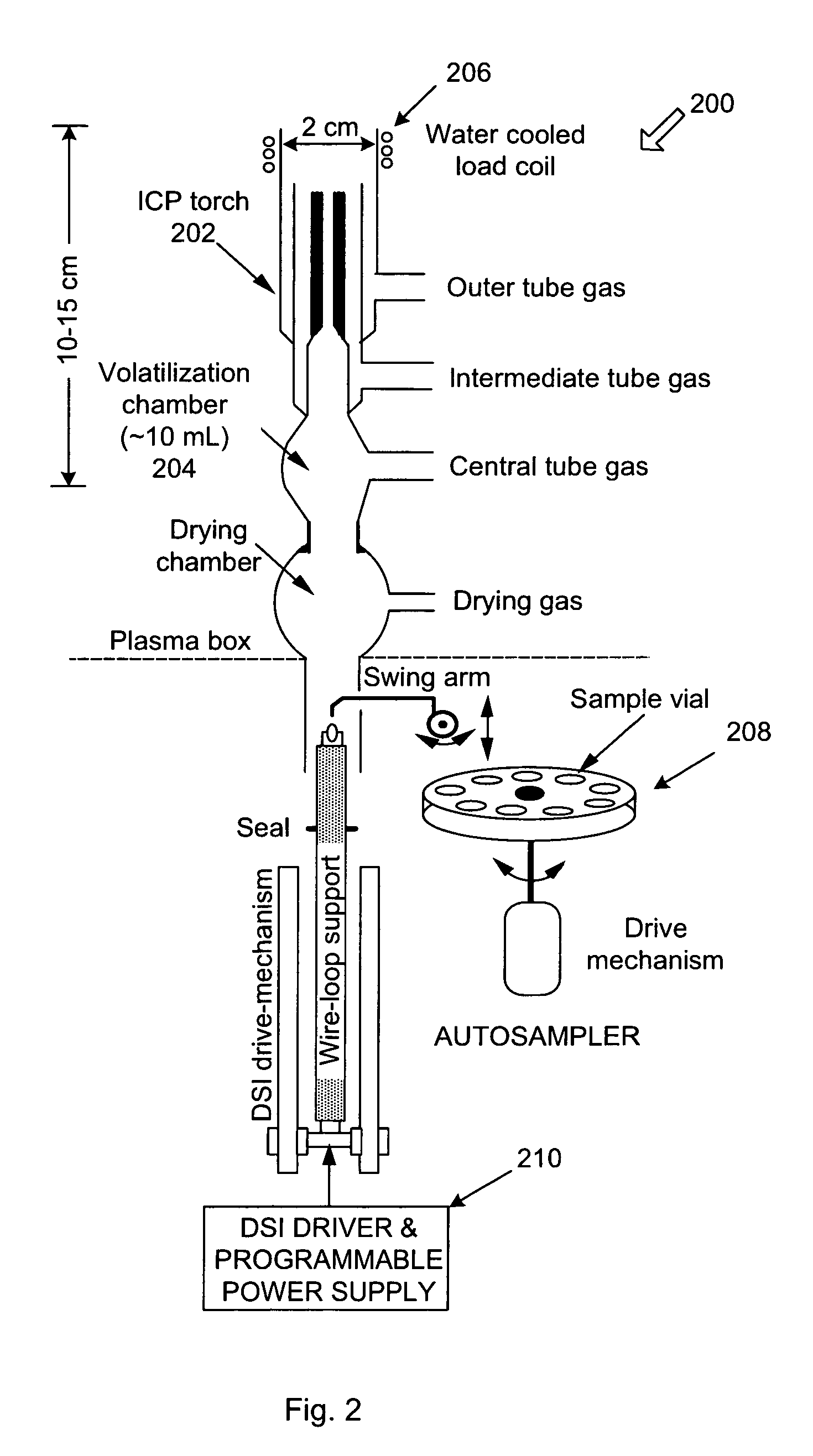Miniaturized source devices for optical and mass spectrometry
a plasma source and micro-plasma technology, applied in the field of miniaturized plasma sources, can solve the problems of prohibitive analysis of a large number of samples, inability to take analytical equipment out of the lab for use in the field, and inability to use portable plasma sources that can be used in the field, etc., and achieve the effect of being convenient to make and opera
- Summary
- Abstract
- Description
- Claims
- Application Information
AI Technical Summary
Benefits of technology
Problems solved by technology
Method used
Image
Examples
example 1
[0112]In this example, the planar microplasma source device 400 shown in FIG. 4 was used. The microplasma was generated by applying a potential difference of 3500 V DC across the electrodes 403. Both the miniaturized sample introduction device 102 and the microplasma source device 100 were operated as described previously. Briefly, 5 μL of a 1000 ppm standard stock solution of Na was pipetted onto the coiled filament 300 of the mini-ITV (described in FIG. 3). The solution was dried, the microplasma device 400 was turned on, the dried solution residue that remained on the coil 300 was vaporized and the 586 nm spectral line of Na was monitored in the time-domain. An example of a transient signal so obtained is shown in FIG. 21. Calibration curves were linear, detection limits were in the 100's of ppb and precision was at about 30%. In particular, device lifetime was a key concern since the microplasma source devices were unusable after about two hours of operation. The short lifetime ...
PUM
 Login to View More
Login to View More Abstract
Description
Claims
Application Information
 Login to View More
Login to View More - R&D
- Intellectual Property
- Life Sciences
- Materials
- Tech Scout
- Unparalleled Data Quality
- Higher Quality Content
- 60% Fewer Hallucinations
Browse by: Latest US Patents, China's latest patents, Technical Efficacy Thesaurus, Application Domain, Technology Topic, Popular Technical Reports.
© 2025 PatSnap. All rights reserved.Legal|Privacy policy|Modern Slavery Act Transparency Statement|Sitemap|About US| Contact US: help@patsnap.com



